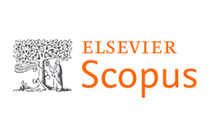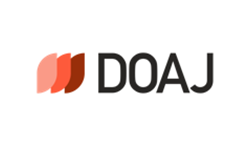ОБЛІК ВИТРАТ НА НДДКР: ВІДМІННОСТІ ТА ПОДІБНОСТІ МІЖ US GAAP, МСФЗ І НІМЕЦЬКИМ КОМЕРЦІЙНИМ КОДЕКСОМ
Ключові слова:
Витрати на НДДКР, витрати на програмове забезпечення, витрати на рекламу, витрати на початок комерційної діяльності, МСФЗ, US GAAP, Німецький комерційний кодекс, фінансова звітність, теорія організації.Анотація
Через свою неосяжність нематеріальні активи становлять багато проблем для бухгалтерського обліку. У контексті US GAAP існує багато стандартів, які визначають процедуру обліку для фінансової звітності специфічно ідентифікованих нематеріальних активів, наприклад, стандарти щодо обліку витрат на НДДКР, програмове забезпечення, рекламу та початок комерційної діяльності. У статті автор аналізує всі ці стандарти та порівнює їх із відповідними положеннями бухгалтерського обліку для фінансової звітності, наведеними у МСФЗ та Німецькому комерційному кодексі.
Незважаючи на те, що US GAAP та МСФЗ, з одного боку, і Німецький комерційний кодекс, з іншого, переслідують різні цілі щодо складання фінансової звітності, у цій статті стверджується, що у процесі обліку витрат на НДДКР та подібних витрат завжди домінує консерватизм. Цей результат можна пояснити за допомогою теорії організації (agency theory). Більш того, порівняно з МСБО/МСФЗ та Німецьким комерційним кодексом, стандарти US GAAP містять приховані альтернативні можливості обліку витрат на ці нематеріальні активи.
Посилання
Adler, Hans, Walther Düring, and Kurt Schmaltz (1998), Rechnungslegung und Prüfung der Unternehmen, Kommentar zum HGB, AktG, GmbHG, PubIG nach den Vorschriften des Bilanzrichtlinien-Gesetzes, Vol. 6, commentary on paragraph 248 II of German Commercial Code, Stuttgart: Schäffer-Poeschel.
Albrecht, W. Steve, James D. Stice, Earl K. Stice, and Monte R. Swain (2005), Accounting: Concepts and Applications, 9th edition, Mason, Ohio: Thomson/South-Western.
Alexander, David and Simon Archer (2005), 2005 Miller International Accounting/Financial Reporting Standards Guide, Chicago: CCH Incorporated.
Burke, John F. (1998), SOP 98-5 - Reporting on the Costs of Start-Up Activities, The CPA Journal 68, 52.
Diamond, Michael A., Earl K. Stice, and James D. Stice (1999), Financial Accounting: Reporting and Analysis, 5th edition, Mason, Ohio: Thom-son/South-Western.
Dyckman, Thomas R., Charles J. Davis, and Roland E. Dukes (2001), Intermediate Accounting, 5th edition, Boston et al.: Irwin McGraw-Hill.
Epstein, Barry J. and Abbas Ale Mirza (2004), Wiley IAS 2004: Interpretation and Application of International Accounting and Financial Reporting Standards, Hoboken, New Jersey: John Wiley & Sons.
Epstein, Barry J., Ralph Nach, and Steven M. Bragg (2006), Wiley GAAP 2006: Interpretation and Application of Generally Accepted Accounting Principles, Hoboken, New Jersey: John Wiley & Sons.
Fox, Terry L. and Reagan M. Ramsower (1989), Why SFAS 86 Needs Revision, Journal of Accountancy] 67 (No. 6), 93-98.
Haller, Axel (1994), Positive Accounting Theory: Die Erforschung der Beweggründe bilanzpolitischen Verhaltens, Die Betriebswirtschaft, 54, 597-612.
Hartman, Bart P., Robert M. Harper, James A. Knoblett, and Phillip M. J. Reckers (1995), Intermediate Accounting, Minneapolis/St. Paul et al.: West Publishing Company.
Hax, Herbert (1991), Theorie der Unternehmung - Information, Anreize und Vertragsgestaltung, in Dieter Ordelheide, Bernd Rudolph, and Elke Büsselmann (eds.), Betriebswirtschaftslehre und Theorie der Verfügungsrechte, Wiesbaden: Gabler, 51-72.
Hense, Burkhard and Lars Lawall (2003), Commentary on paragraph 269 of German Commercial Code, in Axel Berger, Helmut Ellrott, Gerhart Förschle, and Burkhard Hense (ed.), Beck’scher Bilanz-Kommentar, München: C. H. Beck, 910-916.
Herzig, Norbert (2004), IAS/IFRS und steuerliche Gewinnermittlung, Düsseldorf: IDW-Verlag.
IAS 38 (rev. 2004), International Accounting Standard 38, Intangible Assets.
Ingram, Robert W., Thomas L. Albright, Bruce A. Baldwin, and John W. Hill (2005), Accounting: Information for Decisions, 3rd edition, Mason, Ohio: South-Western/ Thomson.
Jeter, Debra C. and Paul K. Chaney (2004), Advanced Accounting, 2nd edition, Hoboken, New Jersey: John Wiley&Sons.
Kieso, Donald E., Jerry J. Weygandt, and Terry D. Warfield (2004), Intermediate Accounting, 11th edition, Hoboken, New Jersey: John Wiley & Sons.
Laux, Helmut (1999), Unternehmensrechnung, Anreiz und Kontrolle: Die Messung, Zurechnung und Steuerung des Erfolgs als Grundprobleme der Betriebswirtschaftslehre, Berlin et al: Springer.
Lenk, Margarita Maria (1998), Intangible Assets, in A. Rashad Abdel-Khalik (ed.), The Blackwell Encyclopedic Dictionary of Accounting, Maiden, Massachusetts: Blackwell Publishers, 180-184.
Lev, Baruch (2001), Intangibles: Management, Measurement, and Reporting, Washington, D. C.: Brookings Institution Press.
McDonald, Charles L. and Daniel Noll (1998), Resolved: Start-Up Costs Are Not Assets, Journal of Accountancy 186 (No. 1), 65-66.
Moody, Lailani (2003), Goodwill and Other Intangible Assets, in D. R. Carmichael and Paul H. Rosenfield (eds.), Accountants’ Handbook, Volume One: Financial Accounting and General Topics, 10th edition, Hoboken, New Jersey: John Wiley & Sons, 20-1 - 20-31.
Needles, Belverd E. Jr., Marian Powers, and Susan V. Crosson (2005), Principles of Accounting, 9th edition, Boston, New York: Houghton Mifflin.
Niemann, Ursula (1999), Immaterielle Wirtschaftsgüter im Handels- und Steuerrecht: Bilanzierung, Bewertung, Sonderfälle, Bielefeld: Erich Schmidt Verlag.
Nikolai, Loren A. and John D. Bazley (2003), Intermediate Accounting, 9th edition, Mason, Ohio: South-Western/Thomson.
Pellens, Bernhard, Rolf Uwe Fülbier and Joachim Gassen (2006), Internationale Rechnungslegung, 6th edition, Stuttgart: Schäffer-Poeschel.
Rees, Lynn L. and David A. Rees (2004), Intermediate Accounting, Mason, Ohio: South-Western/Thomson.
Revsine, Lawrence, Daniel W. Collins and W. Bruce Johnson (2005), Financial Reporting and Analysis, 3rd edition, Upper Saddle River, New Jersey: Prentice Hall.
Schildbach, Thomas (1989), Überlegungen zur Zukunft des Verhältnisses von Handels- und Steuerbilanz, Betriebswirtschaftliche Forschung und Praxis 41, 123-140.
Schildbach, Thomas (2002), US-GAAP. Amerikanische Rechnungslegung und ihre Grundlagen, 2nd edition, München: Vahlen.
SFAS No. 2 (FASB, 1974), Statement of Financial Accounting Standards No. 2, Accounting for Research and Development Costs.
SFAS No. 86 (FASB, 1985), Statement of Financial Accounting Standards No. 86, Accounting for the Costs of Computer Software to Be Sold, Leased, or Otherwise Marketed.
SOP 93-7 (AICPA, 1993), Statement of Position 93-7, Reporting on Advertising Costs.
SOP 98-1 (AICPA, 1998), Statement of Position 98-1, Accounting for Costs of Computer Software Developed or Obtained for Internal Use.
SOP 98-5 (AICPA, 1998), Statement of Position 98-5, Reporting on the Costs of Start-Up Activities.
Spiceland, David, Jim Sepe, and Lawrence Tomassini (2004), Intermediate Accounting, 3rd edition, Boston et al.: Irvin/McGraw-Hill.
Steinberg, Joel (1998), New Standard on Accounting for Start-Up Costs, The CPA Journal 68, 58-59.
Stice, Earl K., James D. Stice, and Michael A. Diamond (2003), Financial Accounting, 6th edition, Mason, Ohio: South-Western/Thomson.
Stice, Earl K., James D. Stice, and K. Fred Skousen (2004), Intermediate Accounting, 15th edition, Mason, Ohio: South-Western/Thomson.
Stickney, Clyde P., Paul R. Brown, and James M. Wahlen (2004), Financial Reporting and Statement Analysis, 5th edition, Mason, Ohio: South-Western/Thomson.
Swindle, Bruce and Daryl Burckel (1992), Accounting for Software Development Costs: Has SFAS No. 86 lived up to its Promise?, The Practical Accountant, 17, 40-49.
Tanenbaum, Joel (1993), Reporting on Advertising Costs, Journal of Accountancy 175 (No.6), 79-80.
Tanenbaum, Joel, and Andrew D. Finger (1994), Reporting on Advertising Costs, The CPA Journal 64, 36-40.
Weber-Grellet, Heinrich (2004), Commentary on paragraph 5 of German Income Tax Law, in Ludwig Schmidt (ed.), Einkommensteuergesetz, Kommentar, München, C. H. Beck, 390-512.
Weiss, Judith, Jan R. Williams, and Joseph V. Carcello (2005), Miller GAAP Guide Levels В, С, and D.: Restatement and Analysis of Other Current FASB, EITF, and AICPA Pronouncements, Chicago: CCH Incorporated.
Weygandt, Jerry J., Donald E. Kieso, and Paul D. Kimmel (2005), Accounting Principles, 7th edition, Hoboken, New Jersey: John Wiley & Sons.
Williams, Jan R. and Joseph V. Carcello (2005), Miller GAAP Guide Level A: Restatement and Analysis of Current FASB Standards, Chicago: CCH Incorporated.
Winnefeld, Robert (2002), Bilanz-Handbuch: Handels- und Steuerbilanz, Rechtsformspezifisches Bilanzrecht, Bilanzielle Sonderfragen, Sonderbilanzen, IAS/US-GAAP, 3rd edition, München: C. H. Beck.
##submission.downloads##
Опубліковано
Як цитувати
Номер
Розділ
Ліцензія
Автори, які публікуються у цьому журналі, погоджуються з наступними умовами:
- Автори залишають за собою право на авторство своєї роботи та передають журналу право першої публікації цієї роботи на умовах ліцензії Creative Commons Attribution License, котра дозволяє іншим особам вільно розповсюджувати опубліковану роботу з обов'язковим посиланням на авторів оригінальної роботи та першу публікацію роботи у цьому журналі.
- Автори мають право укладати самостійні додаткові угоди щодо неексклюзивного розповсюдження роботи у тому вигляді, в якому вона була опублікована цим журналом (наприклад, розміщувати роботу в електронному сховищі установи або публікувати у складі монографії), за умови збереження посилання на першу публікацію роботи у цьому журналі.
- Політика журналу дозволяє і заохочує розміщення авторами в мережі Інтернет (наприклад, у сховищах установ або на особистих веб-сайтах) рукопису роботи, як до подання цього рукопису до редакції, так і під час його редакційного опрацювання, оскільки це сприяє виникненню продуктивної наукової дискусії та позитивно позначається на оперативності та динаміці цитування опублікованої роботи (див. The Effect of Open Access).








